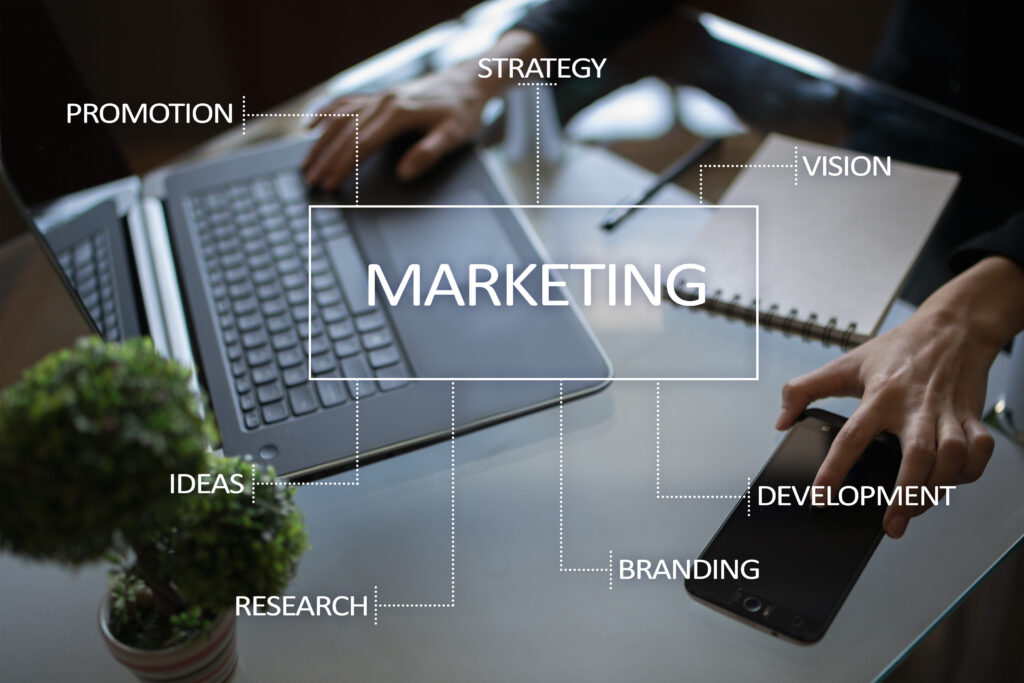This post is also available in: Deutsch
“It’s not enough to be good if no one knows about it” – this is the guiding principle of NORMA Group’s marketing team for the EMEA region (Europe, Middle East and Africa). 11 experts from the team share their insights into why marketing is also essential for industrial companies.
“Show what your company can do.”
Sharath Shankaregowda, Product Manager
1. A company can be as good as it wants to be, but that’s not enough in today’s world. Let’s take a company that is extremely competent in a field, produces outstanding quality products and offers super customer service. Sounds like every customer’s dream, right? But if the company doesn’t communicate its competence to potential customers, success may be elusive. In other words: It’s not enough to be good if no one knows about it!
“What's important is how much of a message resonates.”
Maria Ehmes, Marketing Manager
2. It’s not about visibility in general, it’s about ensuring that what’s important reaches the target audience. A fictional example: Imagine two equally well-known companies with similar portfolios. One company “Alpha” is really good in ten core aspects, the other company “Beta” is really good in only eight aspects. But if “Beta” ensures that all these eight aspects are conveyed, while “Alpha” only conveys five of its top ten aspects – then “Beta” will be perceived as the better company.

Marketing is a key corporate function
“Highlight the added value.”
Sonia Palomeque, Marketing Manager
3. What is meant by that is the added value that the product or service delivers to the customer. In the industrial environment, this is an often overlooked marketing task. Work out what specifically is the added value delivered by your products and services. A value-add for a wholesaler may be that it is a well-known brand with a strong reputation that is easy to sell with a good margin. Then sell that value your strong brand provides rather than any particular specifications.
“Think like a visionary.”
Sören Hartmann, E-Commerce Manager
4. Introducing trends into the company is part of your job (even if it’s not in your job description). Look how markets, sales channels and communication technologies are changing and determine what this means for your company and what it could mean in the future. One example is the digitalization of the channels to the customer: A few years ago, the direct line to the customer was the cutting edge. Then the platform industry emerged, with large online retailers for private customers such as Amazon, for example. What we now know is that platform commerce offers many opportunities, especially for industrial companies in the B2B sector.

Business customers are shopping online privately and increasingly expect the same experience in their professional lives.
“You need to have your eyes open at all times - even in your private life.”
Nilufar Moosavi, Marketing Manager
5. Visit trade fairs, take advantage of what trade associations have to offer, read studies by market experts, and exchange information and ideas with colleagues. Make sure you also look at the end customer sector (B2C marketing), because there are lots of great ideas there that you can easily adapt for your own business. This also applies to your personal life! The other day I bought a new desk. Splashed across the box in big letters was the following message: “Is there a part missing? Please contact us!” with a telephone number. A blank cardboard box is an unused marketing surface. The furniture company uses it to highlight the company’s customer service. Inspiration like this from private life is a huge help.
“Don’t think in terms of quarters, think long-term.”
Daniel Quesada, Webmaster
6. Always ask yourself: How can we boost sales? Many sales activities are driven by numbers – for the next month, the current quarter or the current financial year. That’s important for managing resources in a company. Marketing is more focused on the medium and long term and can energize sales for the future. Explain in your company what trends are important to the industry or could become so. You may have to explain it several times, but you need to be persistent!
“Stop selling, start helping.”
Ventura Portavella, Product Manager
7. How many customer presentations spend pages explaining details about a product and neglect to address the customer’s perspective? Many industrial companies in particular are very technically oriented, which is awesome when it comes to product development. When you step outside, always ask yourself: What are your customers’ pain points? Show your customers where and how your company can help them – as specifically as possible. Think beyond the product. Maybe your customers need direction in a new market and are happy to have a networking event. Or they want help with installation, for example via chat or video. Or do you have wholesalers as customers? Then you can score with good product data quality and product images. That helps them with their business.
Want an example? In the video, two experts show how to quickly repair a fuel line. This kind of instruction can help customers in their everyday work.
“Go where your customers are.”
Desirée Cendón, Marketing Manager
8. Convey your added value in places where your customers are present. You need to know your target groups well – are there relevant industry meetings at trade fairs or association events? What trade publications or websites have good reach among the target group? What social media channels are important for the customer groups and what content is relevant to them – even privately! The answers to these questions can sometimes be quite simple: Classic billboards on the highway can also be just the right choice – if the billboard is located near a plant of a large potential business customer, for example, and many of that customer’s employees regularly drive past it.
“Measure your success.”
Irene Xiques, Online Marketing Manager
9. “Half the money I spend on advertising is wasted. The problem is, I don’t know which half,” said marketing pioneer John Wanamaker in a statement that remained true for nearly 100 years. Today, digital marketing allows us to see much better where, with whom and how our marketing activities are having an impact. It’s much easier to collect data and target more effectively in the digital world. Use tools like Google Analytics or Hotjar to learn which activities are paying off and which ones you should adjust.
“Expand your target audience.”
Heiko Foering, Product Manager
10. Traditional “old” marketing is aimed at direct customers, which in the case of industrial companies often means business customers or sales partners. For industrial companies, it offers huge opportunities to think about additional target groups: to increase awareness, improve reputation or stand out as an employer. As so-called hidden champions, a lot of industrial companies have major problems finding personnel despite having top positions in their respective (niche) markets. Young talent is often attracted to big names. Marketing helps to attract these talents to your company and to win them over.
“Modernize your recruiting.”
Lei Chen, Team Coordinator Product Management
11. You need a strong team to handle the diverse range of tasks. Not the cut-and-dried, typical curriculum vitae of high school diploma – university degree – career entry is absolutely necessary in marketing, certainly not in digital. There are true masterminds in the field who have never graduated. What matters more is relevant experience, for example in agencies or as freelancers or in another context. And, of course, curiosity, creativity and an open mind.
At NORMA Group, we offer positions in marketing, e-commerce, or other projects with a digital focus from time to time. All job openings can be found in our Jobportal. Couldn’t find anything? Why not send us a general application. We also offer internships in marketing and student theses. We look forward to getting to know you and your ideas!





3 responses to “11 tips for successful marketing in industrial companies”
Digambar Ghongte
11 Tips are important in Marketing .Nice
Varun Digital Media
Very impressive marketing tips! For any organization aiming to achieve targeted goals, the need for effective marketing strategies is crucial.
varun digital media
I’m confident that your post will be a valuable for the readers. Thank you for sharing such excellent content.